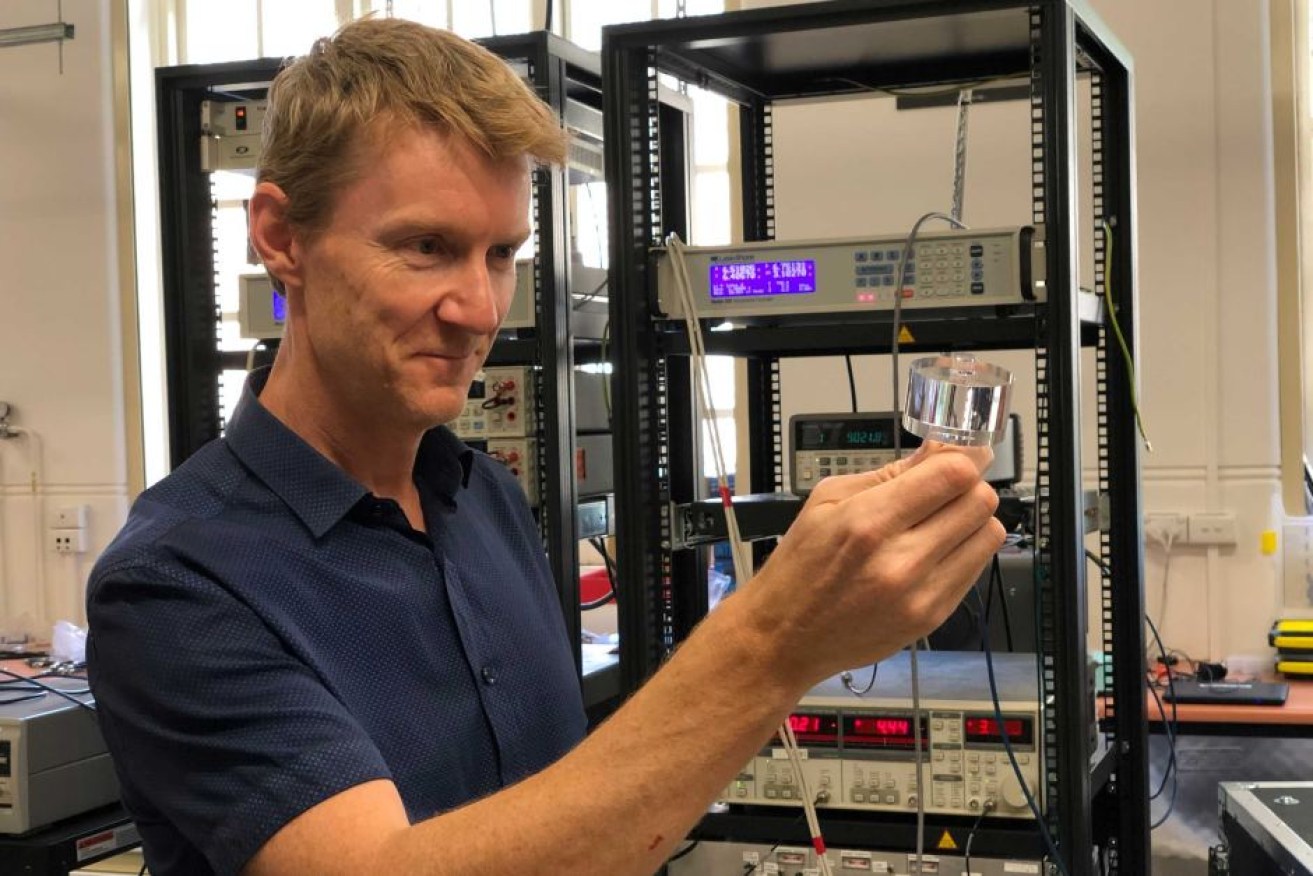Eureka Prizes 2018: World’s most precise clock takes out science gong

Associate Professor Martin O'Connor at the Institute for Photonics and Advanced Sensing at the University of Adelaide. Photo: ABC News
A team of scientists who developed a clock so precise it gains or loses just one second over 40 million years has been recognised with one of the country’s most prestigious science prizes.
The Sapphire Clock is 1000 times more precise than any other commercial system and its accuracy could be used to enhance Australia’s current defence radar system.
The clock has been developed by a team of scientists from the University of Adelaide and could allow for more detail to be received about potential threats to the country.
The development is the result of more than two decades of pioneering research and has won the team one of the prestigious Eureka Prizes for science.
“This is a perfect example of fundamental research in universities leading to high technology advances that benefit our nation,” team leader Professor Andre Luiten said.
From 47 finalists, 16 awards were presented to some of the nation’s brightest minds at the 2018 Australian Museum Eureka Prize ceremony at Sydney Town Hall last Wednesday.
The prizes reward excellence in science in categories of research and innovation, leadership, science engagement and school science.
The scientists who developed the clock were awarded the Defence Science and Technology Prize for Outstanding Science in Safeguarding Australia.









